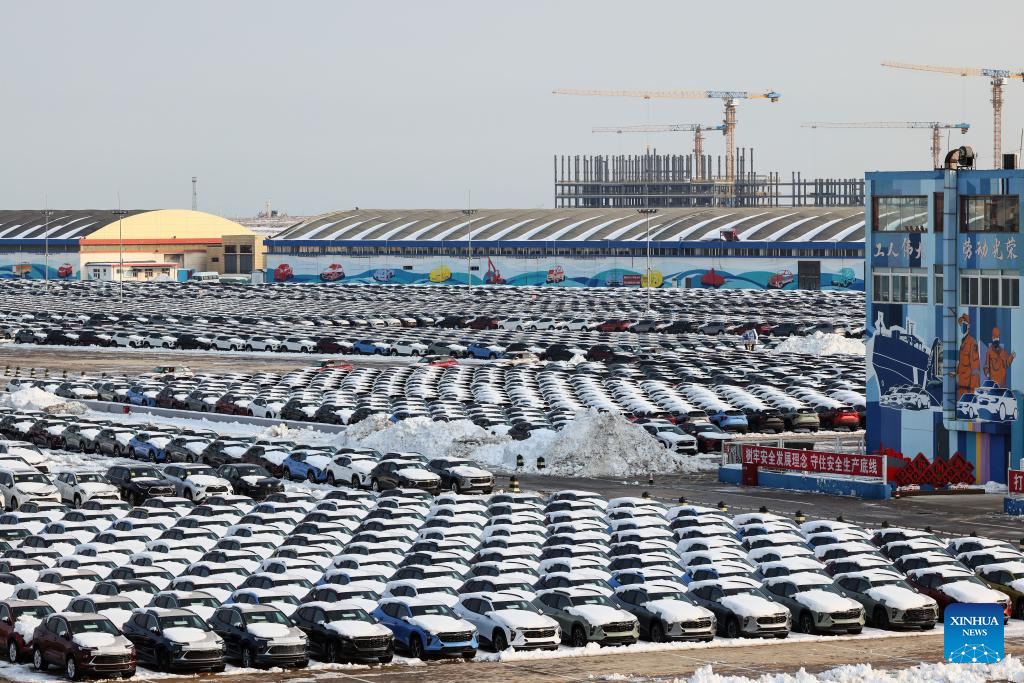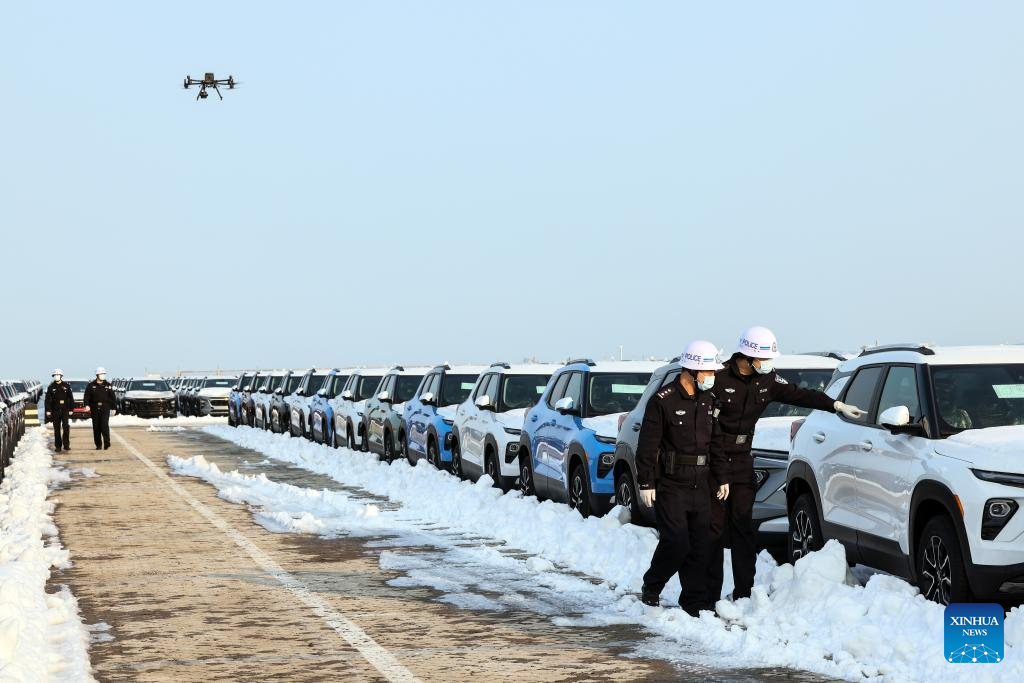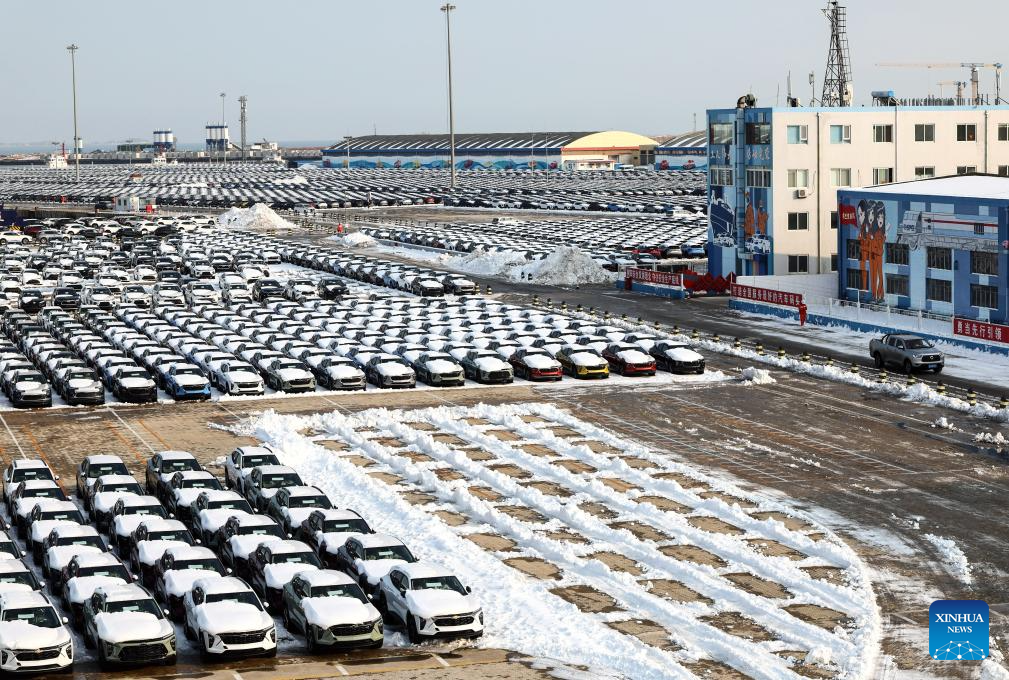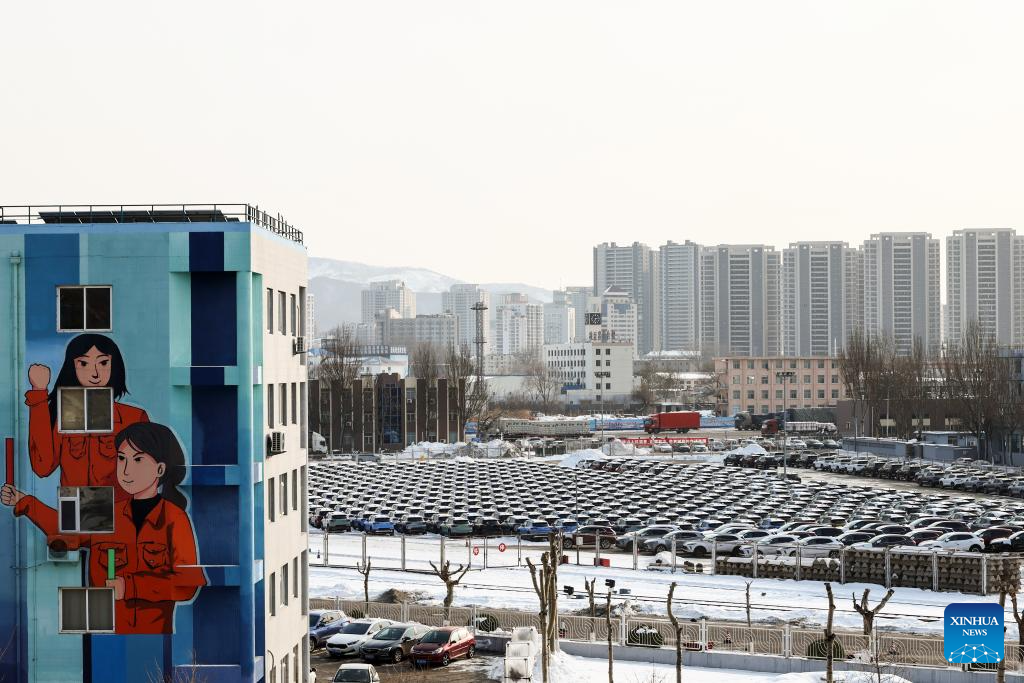
This photo taken on Dec. 27, 2023 shows vehicles to be loaded for export at Yantai Port in east China's Shangdong Province. Yantai Port is China's commercial vehicle logistics base and a pivotal logistics port of commercial vehicle in northern China.
Embedded its business into the integrated supply chain of the global commercial vehicle industry, Yantai Port has opened up unimpeded global commercial vehicle logistics channel from Yantai to North America, Africa, Europe, the Middle East and other regions.
It has also launched the cross-border sea-rail logistics channel toward the Central Asia and a full-mode maritime transport channel to Central and South America, both for the export of commercial vehicles.
By now, Yantai Port has become the first in east China's Shandong Province that has two cross-border sea-rail commercial vehicle transit lines separately toward South Korea and Japan. The full-mode operation volume of commercial vehicles of Yantai Port is expected to exceed 700,000 this year. (Xinhua/Lan Hongguang)

This photo taken on Dec. 27, 2023 shows vehicles to be loaded for export at Yantai Port in east China's Shangdong Province. Yantai Port is China's commercial vehicle logistics base and a pivotal logistics port of commercial vehicle in northern China.
Embedded its business into the integrated supply chain of the global commercial vehicle industry, Yantai Port has opened up unimpeded global commercial vehicle logistics channel from Yantai to North America, Africa, Europe, the Middle East and other regions.
It has also launched the cross-border sea-rail logistics channel toward the Central Asia and a full-mode maritime transport channel to Central and South America, both for the export of commercial vehicles.
By now, Yantai Port has become the first in east China's Shandong Province that has two cross-border sea-rail commercial vehicle transit lines separately toward South Korea and Japan. The full-mode operation volume of commercial vehicles of Yantai Port is expected to exceed 700,000 this year. (Xinhua/Lan Hongguang)

This photo taken on Dec. 27, 2023 shows vehicles to be loaded for export at Yantai Port in east China's Shangdong Province. Yantai Port is China's commercial vehicle logistics base and a pivotal logistics port of commercial vehicle in northern China.
Embedded its business into the integrated supply chain of the global commercial vehicle industry, Yantai Port has opened up unimpeded global commercial vehicle logistics channel from Yantai to North America, Africa, Europe, the Middle East and other regions.
It has also launched the cross-border sea-rail logistics channel toward the Central Asia and a full-mode maritime transport channel to Central and South America, both for the export of commercial vehicles.
By now, Yantai Port has become the first in east China's Shandong Province that has two cross-border sea-rail commercial vehicle transit lines separately toward South Korea and Japan. The full-mode operation volume of commercial vehicles of Yantai Port is expected to exceed 700,000 this year. (Xinhua/Lan Hongguang)

Police officers inspect vehicles to be loaded for export at Yantai Port in east China's Shangdong Province, Dec. 27, 2023. Yantai Port is China's commercial vehicle logistics base and a pivotal logistics port of commercial vehicle in northern China.
Embedded its business into the integrated supply chain of the global commercial vehicle industry, Yantai Port has opened up unimpeded global commercial vehicle logistics channel from Yantai to North America, Africa, Europe, the Middle East and other regions.
It has also launched the cross-border sea-rail logistics channel toward the Central Asia and a full-mode maritime transport channel to Central and South America, both for the export of commercial vehicles.
By now, Yantai Port has become the first in east China's Shandong Province that has two cross-border sea-rail commercial vehicle transit lines separately toward South Korea and Japan. The full-mode operation volume of commercial vehicles of Yantai Port is expected to exceed 700,000 this year. (Xinhua/Lan Hongguang)

This photo taken on Dec. 27, 2023 shows vehicles to be loaded for export at Yantai Port in east China's Shangdong Province. Yantai Port is China's commercial vehicle logistics base and a pivotal logistics port of commercial vehicle in northern China.
Embedded its business into the integrated supply chain of the global commercial vehicle industry, Yantai Port has opened up unimpeded global commercial vehicle logistics channel from Yantai to North America, Africa, Europe, the Middle East and other regions.
It has also launched the cross-border sea-rail logistics channel toward the Central Asia and a full-mode maritime transport channel to Central and South America, both for the export of commercial vehicles.
By now, Yantai Port has become the first in east China's Shandong Province that has two cross-border sea-rail commercial vehicle transit lines separately toward South Korea and Japan. The full-mode operation volume of commercial vehicles of Yantai Port is expected to exceed 700,000 this year. (Xinhua/Lan Hongguang)

This photo taken on Dec. 27, 2023 shows vehicles to be loaded for export at Yantai Port in east China's Shangdong Province. Yantai Port is China's commercial vehicle logistics base and a pivotal logistics port of commercial vehicle in northern China.
Embedded its business into the integrated supply chain of the global commercial vehicle industry, Yantai Port has opened up unimpeded global commercial vehicle logistics channel from Yantai to North America, Africa, Europe, the Middle East and other regions.
It has also launched the cross-border sea-rail logistics channel toward the Central Asia and a full-mode maritime transport channel to Central and South America, both for the export of commercial vehicles.
By now, Yantai Port has become the first in east China's Shandong Province that has two cross-border sea-rail commercial vehicle transit lines separately toward South Korea and Japan. The full-mode operation volume of commercial vehicles of Yantai Port is expected to exceed 700,000 this year. (Xinhua/Lan Hongguang)



